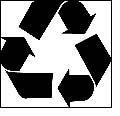
The world’s first Carbon Fibre Recycling and Reuse conference is being held in the stunning city of Hamburg on 3-4 November 2009. The conference opens with an interactive workshop, presenting comprehensive brand new data from IntertechPira’s forthcoming market report “Carbon Fibre Markets to 2015”.
With presentations from key end users Boeing and Airbus, the main conference programme sessions will feature; Taking the initiative on industrial recycling; Carbon fibre recycling technologies: what goes in and what comes out; Aerospace’s role in the development of the recycled carbon fibre supply chain; Strategy on recycled carbon fibre and Light-weighting as a key development target on the automotive industry.
Fibre2fashion in a bid to bring to its readers the concept and objectives behind holding the first ever carbon fibre recycling and reuse conference, we spoke to Mr. Robert Sterad, Programme Producer at IntertechPira, which is organising the conference.
We began by asking him the main objectives behind organizing the conference, to which he said, “We have featured Carbon Fibre presentations, workshops and conferences over the last 4-5 years and at the 2008 European conference in Hamburg last September, attendance was very high, and while speaking to those present, I gauged there was significant interest in the topic and after having opened talks with the main providers of the recycling technology, as well as Steve Pickering from Nottingham University, we decided to host a full scale conference.
He added by saying, “The aim of this event is to educate people in the carbon fibre and composites industries in general, in terms of what can be achieved with the current recycling technology as, we also want to make this a meeting place for companies involved in processing recycled fibres, using recycled product to make new composites, and those end users potentially interested in how they can use recycled fibres to save costs and improve performance in their products”.
Next we asked him about the process of recycling carbon fibres and effect on environment, to which he replied by saying, “There is obviously an effect from processing the fibres, but the negative impact is surprisingly small. The main effect is obviously that the composites much be chopped into pieces in order to feed into the recycling machines, which means the recycled fibres are long or short length fibres, rather than continuous tow, however, the recycling techniques have been developed in such a way that there is minimal surface damage, the resins and coatings are mainly removed as a whole”.
The recycled chopped fibres have mechanical properties up to 80-85% as good as virgin fibres, but the main challenge comes in how to then form these fibres back into a mat or weave to combine with new resin and make 2nd generation composites and the key to strength is achieving alignment, and this is where much of the research and development is being directed right now. Some exciting new developments will be presented at the conference”, he ended by saying.
To conclude, we asked him about the progress in commercialization of technology in carbon fibre recycling, to which he said, “The main three technology providers are at or very near commercial stage. Through strategic partnerships with major end users of carbon fibre (and therefore major creators of manufacturing waste), a materials stream has been established and fibres are being recycled in reasonable quantities. However, there is a long way to go in terms of developing a wide range of products made from the recycled fibres”.
He concluded by saying, “One of the aims of this event is to engage the major players in key end-use markets where recycled carbon fibre could replace current materials and by understanding the needs of these end user markets, the technology providers can broaden the end market for recycled fibre products and supply new input materials to industries ranging from construction to automotive to consumer electronics”.
Source:www.fibre2fashion.com
